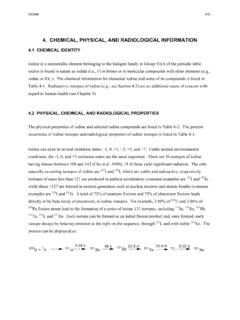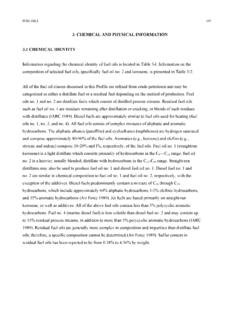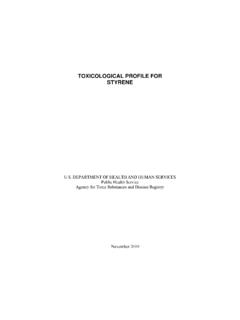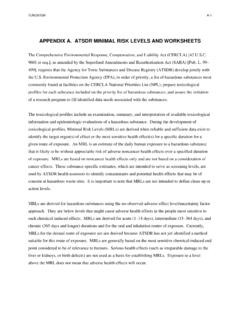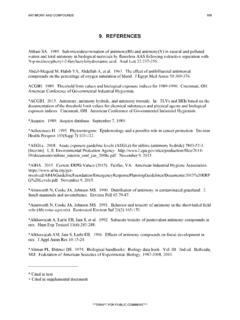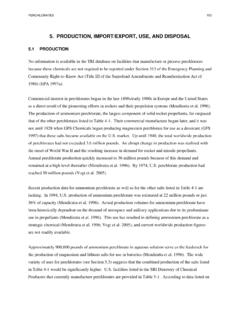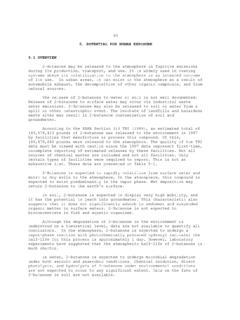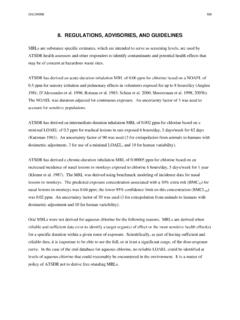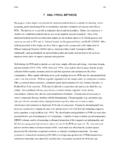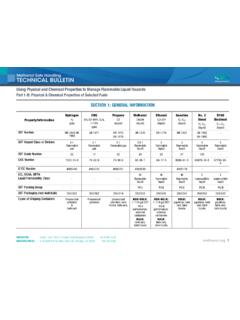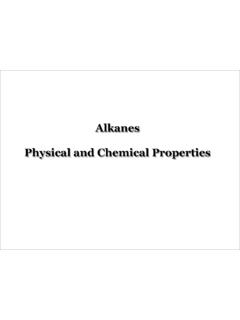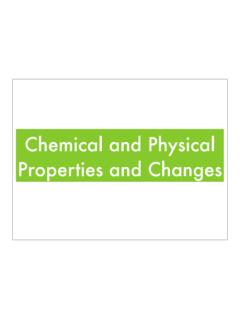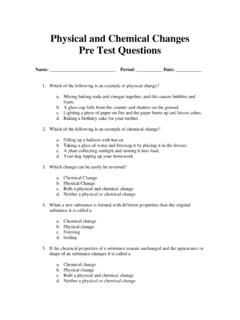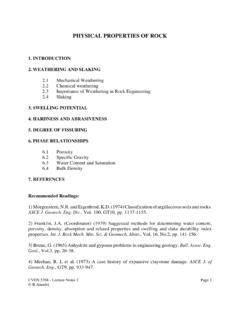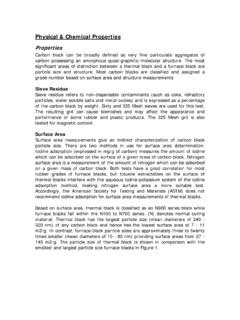Transcription of 3. CHEMICAL AND PHYSICAL INFORMATION
1 CDDs 357 3. CHEMICAL AND PHYSICAL INFORMATION CDDs are a class of related chlorinated hydrocarbons which are structurally similar. The basic structure is a dibenzo-p-dioxin (DD) molecule, which is comprised of 2 benzene rings joined at their para carbons by 2 oxygen atoms. There are 8 homologues of CDDs, monochlorinated through octachlorinated. The class of CDDs contains 75 congeners, consisting of 2 monochlorodibenzo-p-dioxins (MCDDs), 10 dichlorodibenzo p-dioxins (DCDDs), 14 trichlorodibenzo-p-dioxins (TrCDDs), 22 tetrachlorodibenzo-p-dioxins (TCDDs), 14 pentachlorodibenzo-p-dioxins (PeCDD), 10 hexachlorodibenzo-p-dioxins (HxCDDs), 2 hepta chlorodibenzo-p-dioxins (HpCDDs), and a single octachlorodibenzo-p-dioxin (OCDD) (Ryan et al. 1991). The general structure of the dibenzo-p-dioxins is shown below. The numbers indicate the positions for chlorine substitutions, excluding, of course, positions 5 and 10. O O 10 1 2 3 456 7 8 9 Not all congeners have been studied for their CHEMICAL and PHYSICAL properties , but basic properties are known for the CDDs as a CHEMICAL family and for the homologous groups.
2 Chlorinated dioxins exist as colorless solids or crystals in the pure state. They have a low solubility in water and a low volatility. Chlorinated dioxins have an affinity for particulates and readily partition to particles in air, water, and soil. The more toxic compounds appear to be the 2,3,7,8-substituted tetra-, penta-, and hexachloro compounds ( , 2,3,7,8-TCDD, 1,2,3,7,8-PeCDD, 1,2,3,4,7,8-HxCDD, 1,2,3,6,7,8-HxCDD, and 1,2,3,7,8,9-HxCDD). These are also the congeners, along with OCDD, that have the greatest tendency to bioaccumulate. One of the most toxic congeners in mammals is believed to be 2,3,7,8-TCDD; this compound has also been the most studied of the TCDD congeners. CHEMICAL IDENTITY INFORMATION regarding the CHEMICAL identities of CDDs is presented in Table 3-1. PHYSICAL AND CHEMICAL properties INFORMATION regarding the PHYSICAL and CHEMICAL properties of CDDs is presented in Table 3-2.

